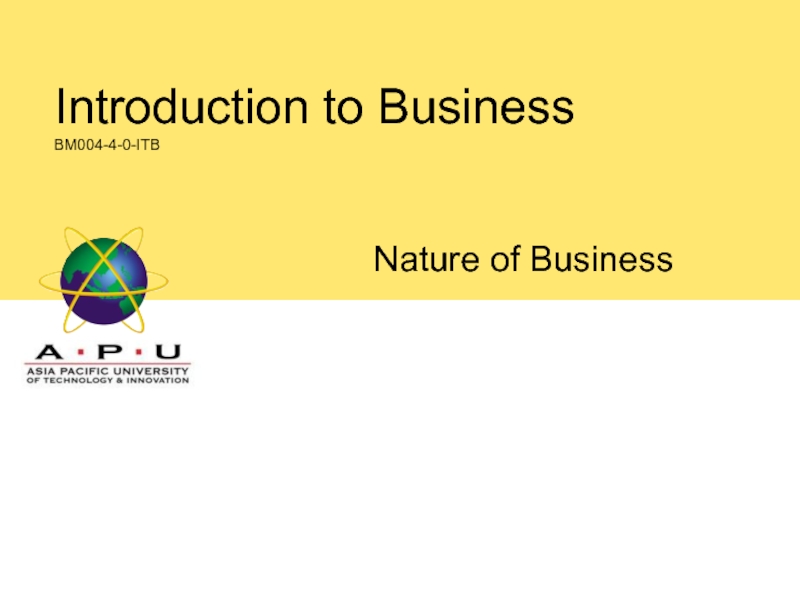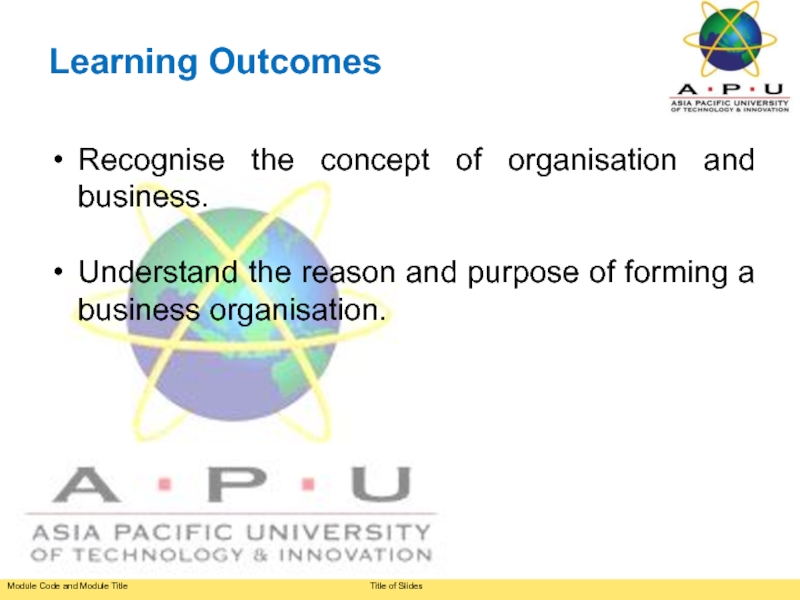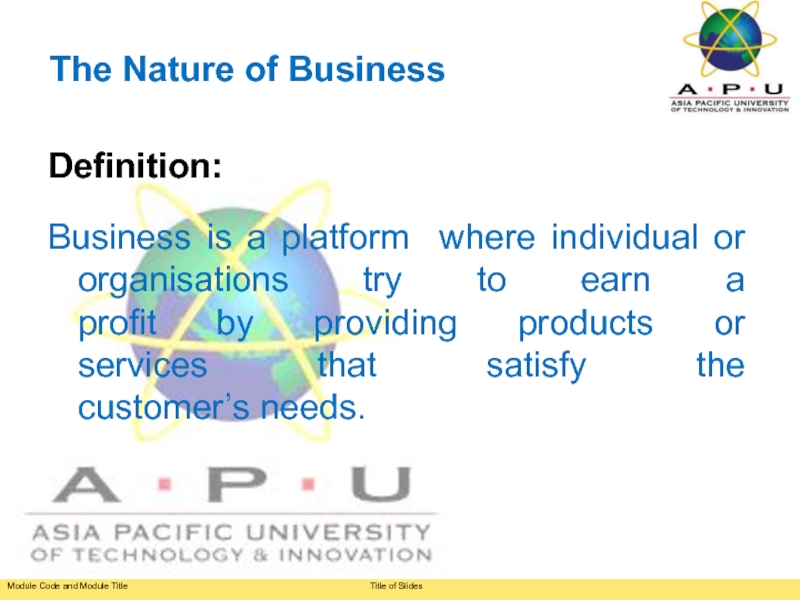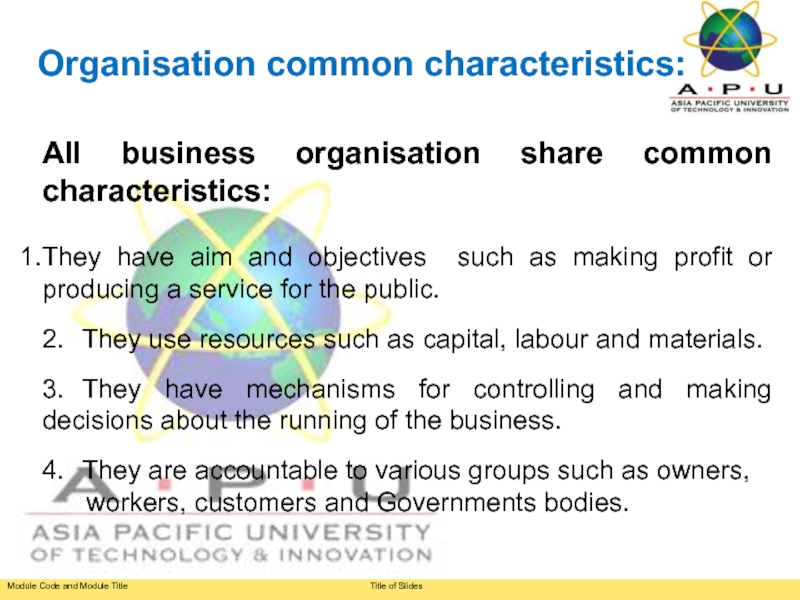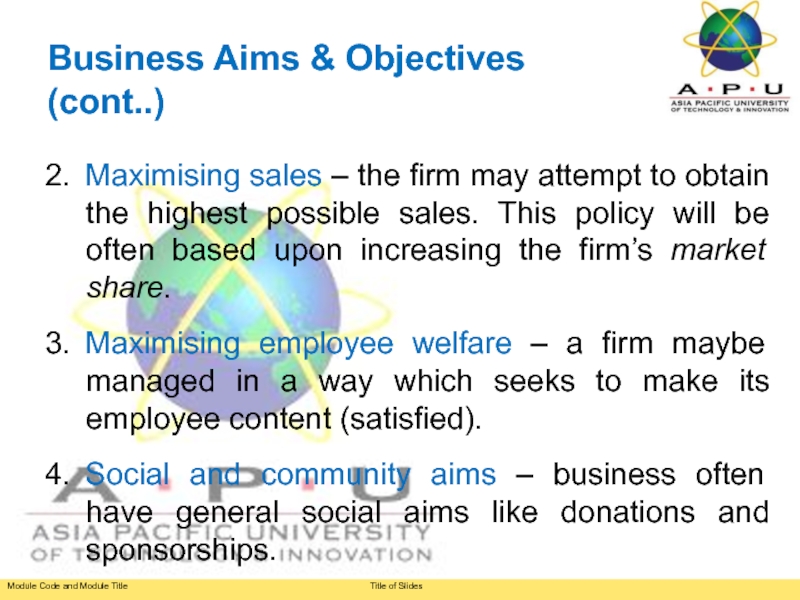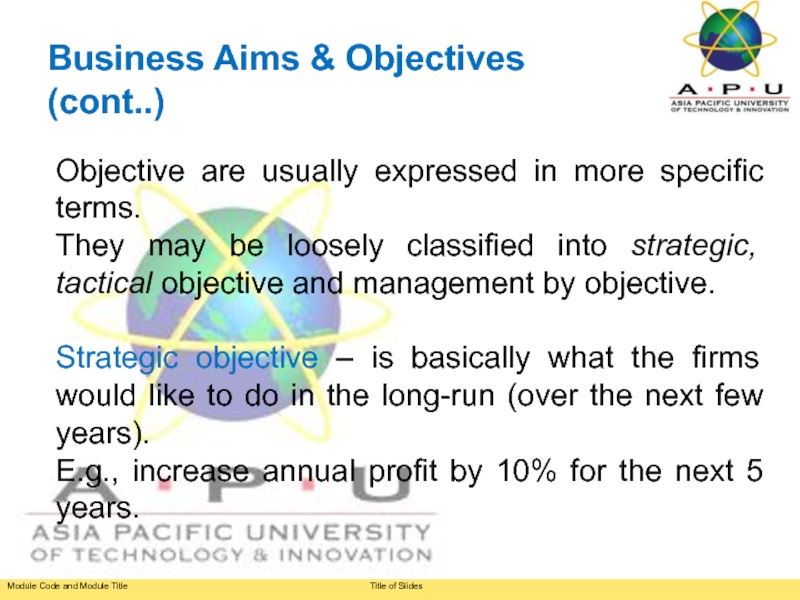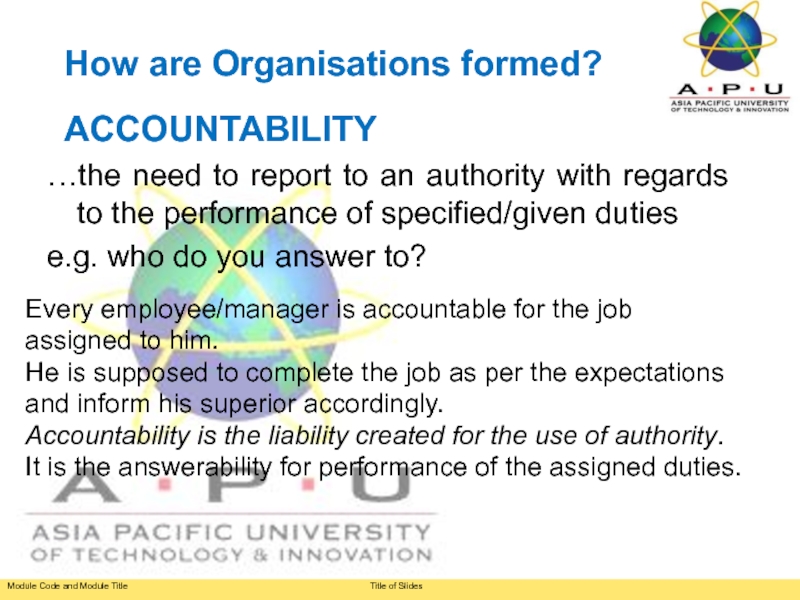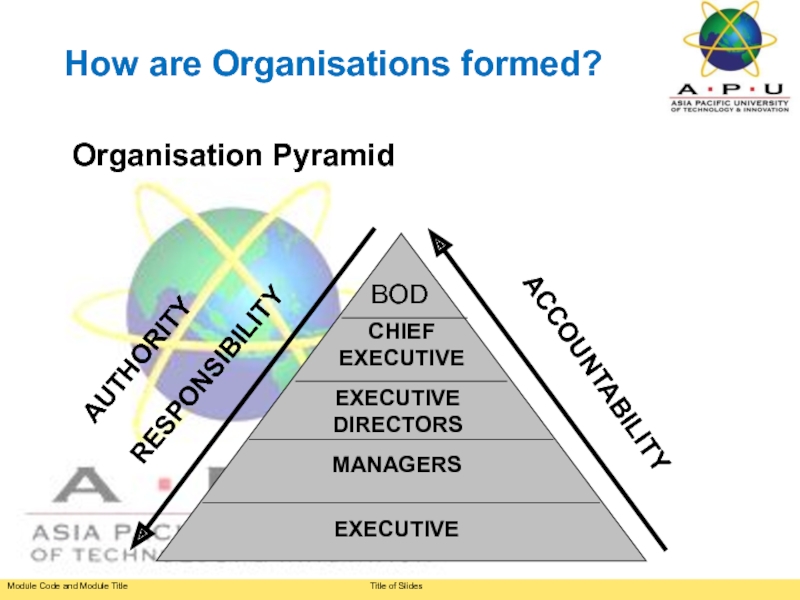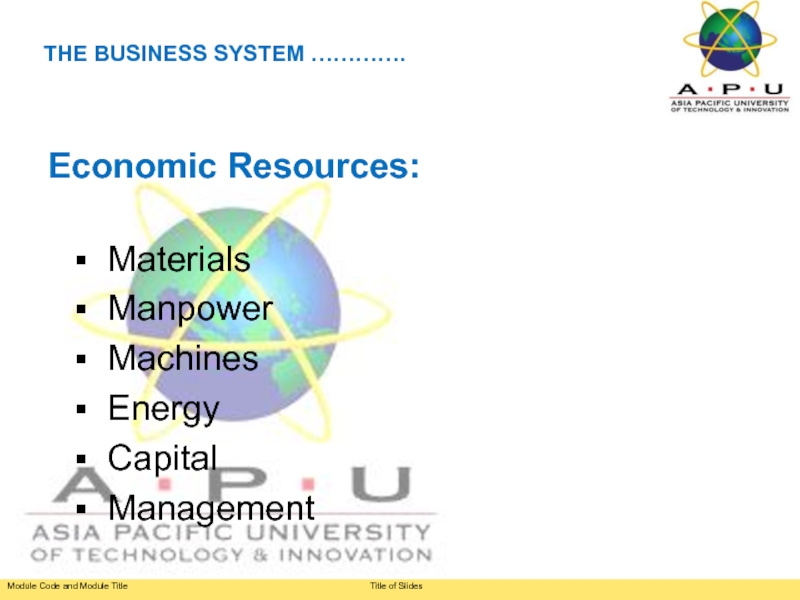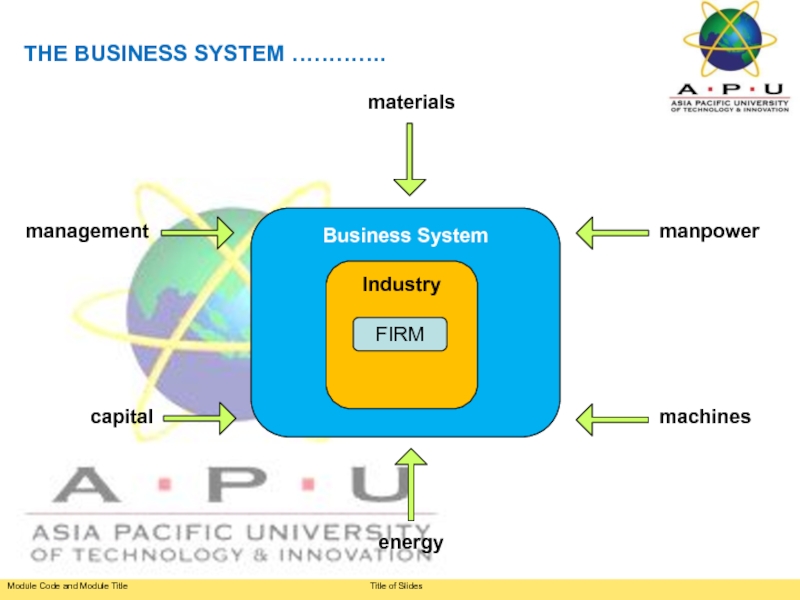- Главная
- Разное
- Дизайн
- Бизнес и предпринимательство
- Аналитика
- Образование
- Развлечения
- Красота и здоровье
- Финансы
- Государство
- Путешествия
- Спорт
- Недвижимость
- Армия
- Графика
- Культурология
- Еда и кулинария
- Лингвистика
- Английский язык
- Астрономия
- Алгебра
- Биология
- География
- Детские презентации
- Информатика
- История
- Литература
- Маркетинг
- Математика
- Медицина
- Менеджмент
- Музыка
- МХК
- Немецкий язык
- ОБЖ
- Обществознание
- Окружающий мир
- Педагогика
- Русский язык
- Технология
- Физика
- Философия
- Химия
- Шаблоны, картинки для презентаций
- Экология
- Экономика
- Юриспруденция
Nature of Business. Introduction to Business презентация
Содержание
- 1. Nature of Business. Introduction to Business
- 2. Learning Outcomes Recognise the concept of organisation
- 3. Why Study Business? To understand Business
- 4. The Nature of Business Definition:
- 5. What are Organisations? … a group of
- 6. Why are Organisations formed? Objectives Reasons (motivation)
- 7. Organisation common characteristics: All business organisation share
- 8. Organisation common characteristics:
- 9. Functions of Business The functions of a
- 10. Business Aims & Objectives Aims and
- 11. Business Aims & Objectives
- 12. Objective are usually expressed
- 13. Tactical objectives – designed to
- 14. The process of forming an organisation establishes
- 15. AUTHORITY …the power or right to give
- 16. RESPONSIBILITY …the obligation to carry out specific
- 17. ACCOUNTABILITY …the need to report to an
- 18. Organisation Pyramid BOD CHIEF EXECUTIVE
- 22. Description: The Business System can be described
- 23. THE BUSINESS SYSTEM …………. Economic Resources:
- 24. Business System Industry THE BUSINESS SYSTEM …………. FIRM
- 25. Key Terms you must be able to
- 26. Q & A Question and Answer Session
Слайд 2Learning Outcomes
Recognise the concept of organisation and business.
Understand the reason and
Слайд 3Why Study Business?
To understand Business Language
Knowledge on Business can help
job as a:
1) Consumer
2) Employee
3) Business Owner/ Manager
4) Investor
Слайд 4
The Nature of Business
Definition:
Business is a platform where individual or
Слайд 5What are Organisations?
… a group of people working together over a
Richards, M., Business Org (1993) pg. 1
Definition:
Слайд 6Why are Organisations formed?
Objectives
Reasons (motivation)
Opinions, style
Skills, resources, experience
Different people have different:
Individually,
Слайд 7Organisation common characteristics:
All business organisation share common characteristics:
They have aim and
2. They use resources such as capital, labour and materials.
3. They have mechanisms for controlling and making decisions about the running of the business.
4. They are accountable to various groups such as owners,
workers, customers and Governments bodies.
Слайд 8
Organisation common characteristics:
Business can be :
Profit based business
Non-Profit based business
Small
Large and complex
Слайд 9Functions of Business
The functions of a business, whether large or small
Functions of Business
Production
Human Resource
Finance
Marketing
Слайд 10Business Aims & Objectives
Aims and objectives are the principles by which
Examples of commonly expressed aims includes:
1. Maximising profits - means making the highest profit. (Main aim of privately-owned business)
Profit is important:
- to allow the business to survive,
- to provide a financial reward to the owners of
the business for putting their money into it,
- a source of finance for future investment.
Слайд 11Business Aims & Objectives
2. Maximising sales – the firm may attempt to obtain the highest possible sales. This policy will be often based upon increasing the firm’s market share.
3. Maximising employee welfare – a firm maybe managed in a way which seeks to make its employee content (satisfied).
4. Social and community aims – business often have general social aims like donations and sponsorships.
Слайд 12
Objective are usually expressed in more specific terms.
They may be loosely
Strategic objective – is basically what the firms would like to do in the long-run (over the next few years).
E.g., increase annual profit by 10% for the next 5 years.
Business Aims & Objectives (cont..)
Слайд 13
Tactical objectives – designed to ensure that the strategic objectives are
They are more detailed and generally short-term,
Typically set for the year ahead.
Management by objective (MBO) – involves setting
Systematic targets for individual employees, usually manager. It involves measuring the employee’s performance against previously agreed
Standards.
Business Aims & Objectives (cont..)
Слайд 14The process of forming an organisation establishes tiers (levels) of:
Authority
Responsibility
Accountability
How are
Слайд 15AUTHORITY
…the power or right to give orders or make decisions.
OR
…to
How are Organisations formed?
reference http://www.cogsci.princeton.edu/cgi-bin/webwn?stage=1&word=authority
Слайд 16RESPONSIBILITY
…the obligation to carry out specific duties up to a declared
How are Organisations formed?
Слайд 17ACCOUNTABILITY
…the need to report to an authority with regards to the
e.g. who do you answer to?
How are Organisations formed?
Every employee/manager is accountable for the job assigned to him.
He is supposed to complete the job as per the expectations
and inform his superior accordingly.
Accountability is the liability created for the use of authority.
It is the answerability for performance of the assigned duties.
Слайд 18Organisation Pyramid
BOD
CHIEF
EXECUTIVE
EXECUTIVE
DIRECTORS
MANAGERS
EXECUTIVE
AUTHORITY
RESPONSIBILITY
ACCOUNTABILITY
How are Organisations formed?
Слайд 22Description:
The Business System can be described as the combination of various
The Business System
Слайд 23THE BUSINESS SYSTEM ………….
Economic Resources:
Materials
Manpower
Machines
Energy
Capital
Management
Слайд 25Key Terms you must be able to use
If you have mastered
ORGANISATIONS
BUSINESS
RESPONSIBILITY
AUTHORITY
ACCOUNTABILITY
